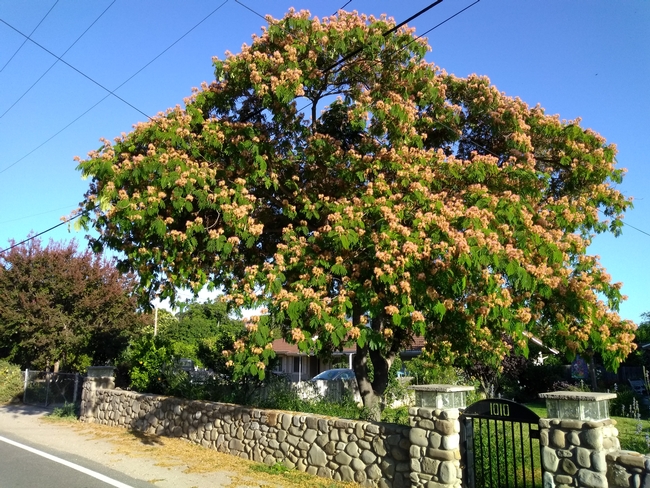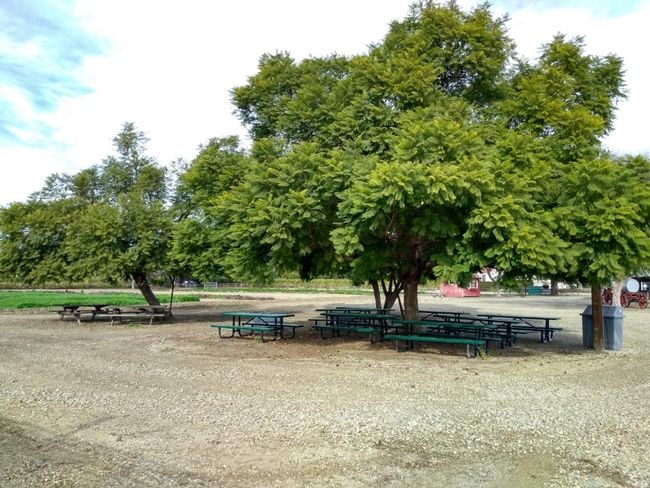
Posts Tagged: Downer
Tree lovers invited to free webinars to learn proper tree-care
While spring may not be the best time to plant shade trees, many people are inspired to plant trees as part of Earth Day and Arbor Day celebrations. Millions of trees are planted every year in America and many of them perish after planting, according to James Downer, University of California Cooperative Extension horticulture and plant pathology advisor.
“Tree planting campaigns, while well intentioned, may not consider all the realities of bringing young trees into landscapes and caring for them over decades,” Downer said. “Increasingly, city budgets for tree care are being cut back and planting budgets are non-existent in many cities. Tree planting is left to volunteer groups, homeowners, schools and other organizations that may want trees in their communities.”
Planting is just the first step in trees' lives and can also be the reason for their demise if they are not planted correctly. Trees that survive initially may perish later in their young lives due to poor maintenance or exotic pests or from drought.
To teach members of the public how to select and care for trees, Downer will host a series of free webinars. The five one-hour sessions will cover tree selection, where and how to plant a tree, how to prune trees, how to feed and water them, and pest management. Downer, who is based in Ventura County, welcomes all tree enthusiasts.
When: Thursdays beginning April 22, 2021
Time: 12:30 – 1:30 p.m.
Registration and details at https://ucanr.edu/survey/survey.cfm?surveynumber=33331.
Schedule:
April 22: Selection of Trees (benefits of trees)
April 29: Planting Trees
May 6: Pruning Trees
May 13: Caring for Trees (mulch, water, fertilizer)
May 20: Managing tree pests and diseases
“Establishing trees starts with tree selection—planting the right tree in the right place,” Downer said. “As trees grow and begin to fill their space in gardens, landscapes, parks or city streets they begin to require other kinds of care.”
Downer, who holds a Ph.D. in plant pathology from UC Riverside, has 35 years of experience in horticulture and plant pathology. His research focuses on diseases of shade trees and other landscape plants and cultural practices to maintain landscape plants, especially trees. He also studies the use of mulch, soil microbiology and disease suppression in mulched soils.
No need to amend soil when planting new trees or perennials
Gardeners who follow conventional wisdom and nursery recommendations to mix organic amendments into the soil when planting new trees or perennials in their landscapes are making a mistake, according to UC Cooperative Extension environmental horticulture experts.
“This is one of the garden myths that I'm trying to dispel,” said Jim Downer, UCCE environmental horticulture advisor in Ventura County. “We recommend residents not amend the soil when they are planting based on outcomes we have observed in research.”
Downer and Ben Faber, UCCE advisor for water, soils and subtropical crops in Ventura County, summarized this and other information about the use of organic amendments in home landscapes in a six-page publication now available for free download from the UC Agriculture and Natural Resources catalog at https://anrcatalog.ucanr.edu/Details.aspx?itemNo=8711.
The publication says research has not shown that adding amendments to planting holes for perennial plants provides a significant advantage compared to using native backfill.
With perennial plants, the roots do not stay in the planting hole for long, so amendments would only be effective for a short time. The practice of amending the soil further harms the plant by creating an interface where the soil in the planting hole is different from the native soil.
“When that happens, roots and water don't move as well through the soil,” he said.

While there are few reasons to mix organic amendments into the soil, Downer said mulching the soil surface with uncomposted organic matter is almost always beneficial.
“If your goal is to get organic matter into the soil, we recommended topping the soil with fresh, undecomposed wood chips. It will give you microbial stimulation and suppress disease. Arthropods will slowly grab pieces of the mulch and incorporate it into the soil at a gentle rate,” he said.
The publication also provides information about various common organic amendments – such as coconut fiber, coffee grounds, horse manure, peat moss and green waste compost – with details about each product's benefits and detriments.
Anthracnose Pest Note Updated
Anthracnose is a group of fungal diseases that infect many trees and shrubs, causing dark lesions...
Armillaria Root Rot in Landscape Trees
What is Armillaria Root Rot? Armillaria root rot is a severe fungal disease that affects trees,...
Wood Decay Fungi in Landscape Trees
Landscape trees provide welcome shade, fruit, homes for wildlife, and even a place for kids to...



